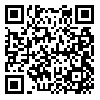1. Prasad S, Cucci RA, Green GE, Smith RJ. Genetic testing for hereditary hearing loss: connexin 26 (GJB2) allele variants and two novel deafness-causing mutations (R32C and 645-648delTAGA). Human mutation. 2000 Dec 1;16(6):502-508. [
DOI:10.1002/1098-1004(200012)16:63.0.CO;2-4]
2. Horn DL, Fagan MK, Dillon CM, Pisoni DB, Miyamoto RT. Visual‐Motor Integration Skills of Prelingually Deaf Children: Implications for Pediatric Cochlear Implantation. The Laryngoscope. 2007 Nov 1;117(11):2017-25. [
DOI:10.1097/MLG.0b013e3181271401]
3. Erden Z, Otman S, Tunay VB. Is visual perception of hearing-impaired children different from healthy children?. International journal of pediatric otorhinolaryngology. 2004 Mar 31;68(3):281-5. [
DOI:10.1016/j.ijporl.2003.10.003]
4. Parasnis I. Visual perceptual skills and deafness: A research review. Journal of the Academy of Rehabilitative Audiology. 1983;16:148-60.
5. Conway CM, Pisoni DB, Kronenberger WG. The importance of sound for cognitive sequencing abilities the auditory scaffolding hypothesis. Current Directions in Psychological Science. 2009 Oct 1;18(5):275-9. [
DOI:10.1111/j.1467-8721.2009.01651.x]
6. Schlumberger E, Narbona J, Manrique M. Non‐verbal development of children with deafness with and without cochlear implants. Developmental Medicine & Child Neurology. 2004 Sep 1;46(9):599-606. [
DOI:10.1111/j.1469-8749.2004.tb01023.x]
7. Quittner AL, Leibach P, Marciel K. The impact of cochlear implants on young deaf children. Arch Otolaryngol Head Neck Surg. 2004 May;130(5):547-54. [
DOI:10.1001/archotol.130.5.547]
8. shojaei R, Hasanzadeh S, Farahbod M. Visual- motor Skills in School-aged Students with and without Profound Hearing Loss. JOEC. 2013; 13 (3) :23-26. [Persian]
9. Zafrana M, Nikoltsou K, Daniilidou E. Effective learning of writing and reading at preschool age with a multisensory method: A pilot study. Perceptual and motor skills. 2000 Oct;91(2):435-46. [
DOI:10.2466/pms.2000.91.2.435]
10. Green CS, Bavelier D. Effect of action video games on the spatial distribution of visuospatial attention. Journal of experimental psychology: Human perception and performance. 2006 Dec;32(6):1465-78. [
DOI:10.1037/0096-1523.32.6.1465]
11. Keshner EA. Virtual reality and physical rehabilitation: a new toy or a new research and rehabilitation tool?. Journal of NeuroEngineering and Rehabilitation. 2004 Dec 3;1(1):8.
12. Jelsma D, Geuze RH, Mombarg R, Smits-Engelsman BC. The impact of Wii Fit intervention on dynamic balance control in children with probable Developmental Coordination Disorder and balance problems. Human movement science. 2014 Feb 28;33:404-18. [
DOI:10.1016/j.humov.2013.12.007]
13. Bateni H. Changes in balance in older adults based on use of physical therapy vs the Wii Fit gaming system: a preliminary study. Physiotherapy. 2012 Sep 30;98(3):211-6. [
DOI:10.1016/j.physio.2011.02.004]
14. Koslucher F, Wade MG, Nelson B, Lim K, Chen FC, Stoffregen TA. Nintendo Wii Balance Board is sensitive to effects of visual tasks on standing sway in healthy elderly adults. Gait & posture. 2012 Jul 31;36(3):605-8. [
DOI:10.1016/j.gaitpost.2012.05.027]
15. Howcroft J, Klejman S, Fehlings D, Wright V, Zabjek K, Andrysek J, Biddiss E. Active video game play in children with cerebral palsy: potential for physical activity promotion and rehabilitation therapies. Archives of physical medicine and rehabilitation. 2012 Aug 31;93(8):1448-56. [
DOI:10.1016/j.apmr.2012.02.033]
16. Melonio A, Gennari R. How to design games for deaf children: Evidence-based guidelines. 2nd International Workshop on Evidence-based Technology Enhanced Learning 2013 (pp. 83-92). Springer International Publishing. [
DOI:10.1007/978-3-319-00554-6_11]
17. Farahbod, M. Minaei, Asghar. Adaptation and standardization of visual-motor skills test (revised version). Journal of Rehabilitation. 2004 May;5(1):39-48. [Persian]
18. Hand-Eye Coordination Learning Games For Kids. [Internet]. [cited 2016 may 2]. Available from: http://www.learninggamesforkids.com/hand_eye_games.html
19. Radovanovic V. The influence of computer games on visual-motor integration in profoundly deaf children. British Journal of Special Education. 2013 Dec 1;40(4):182-8. [
DOI:10.1111/1467-8578.12042]
20. Soltani Kouhbnani, S and Sharifi Daramadi, P. The Efficacy of Working Memory Computer Assisted Program on Executive Functions Improvement in Deaf Students. Developmental Psychology (Journal of Iranian Psychologist).2013;10(37):51-60. [Persian]
21. Gonzales-Ortega D, Díaz-Pernas FJ, Martínez-Zarzuela M, Antón-Rodríguez M. A Kinect-based system for cognitive rehabilitation exercises monitoring. Computer methods and programs in biomedicine. 2014 Feb 28;113(2):620-31. [
DOI:10.1016/j.cmpb.2013.10.014]

 ، پرویز شریفی درآمدی*
، پرویز شریفی درآمدی* 
 1، شهلا پزشک1
1، شهلا پزشک1 
 ، نورعلی فرخی1
، نورعلی فرخی1 





